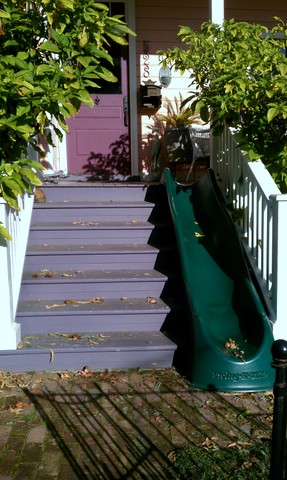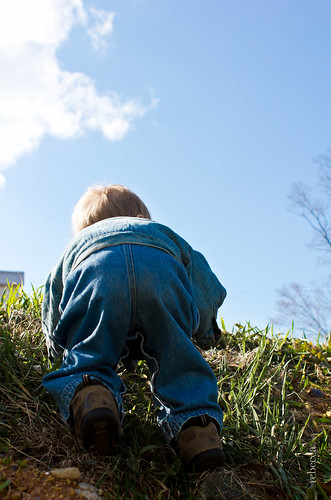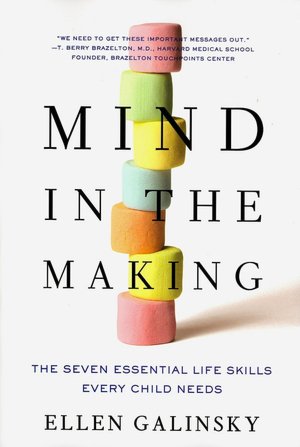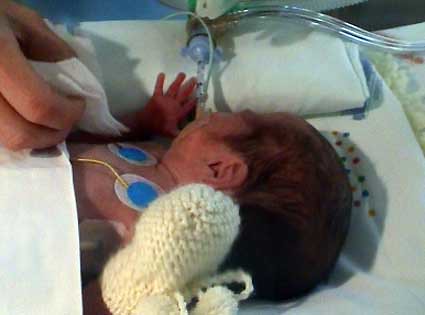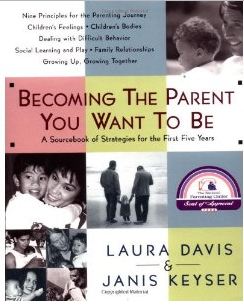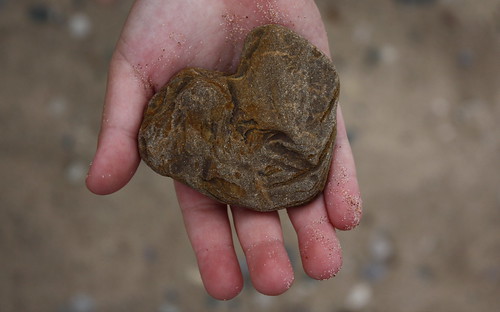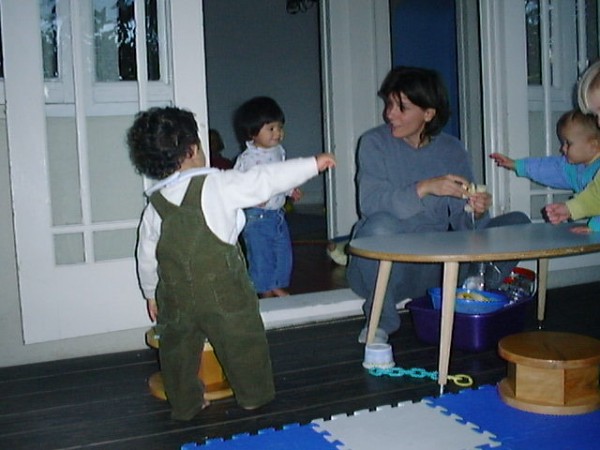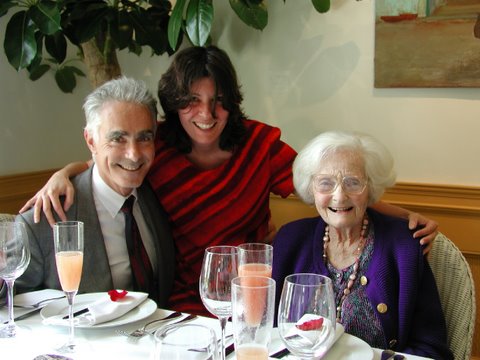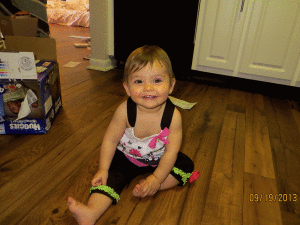In the day-to-day give and take of good infant/toddler child care, children and their caregivers relate in a way that looks much like a dance, with the child leading, the caregiver picking up the rhythm and following. When a caregiver reads and responds to the young child’s messages with sensitivity, the child’s hunger to be understood is satisfied. The conviction that “I am someone who is paid attention to” becomes part of the infant or toddler’s identity. Doctor J. Ronald Lally
It’s a wonder I haven’t tackled the topic of what to consider when choosing childcare for infants and toddlers before because it’s one parents often ask me about. Part of the reason I tend to shy away from this subject is that I have a bias against center-based or group childcare for children under the age of three, partly because I know firsthand how woefully inadequate many programs are at truly meeting the unique needs of babies and toddlers.
As Doctor Ronald Lally of the Program For Infant Toddler Care says, “Simply put, a preschooler has already formed a pretty solid sense of identity, with definite likes, dislikes, inclinations, and attitudes, but an infant or toddler is forming his or her sense of identity. Part of what the infant gets from the caregiver is a sense of who that caregiver is; this sense is incorporated into the infant’s definition of self. The process of forming a strong positive identity should occur in a setting that offers security, protection, and intimacy. It doesn’t happen in “school”; it happens in a continuing relationship with a caregiver.”
I understand it isn’t a possibility for many families, whether due to personal choice, family structure, or financial considerations, to stay home with their babies, and/or to hire a nanny to provide in-home care until they are three years of age or so. If a family chooses or requires care outside of the home, I encourage parents to consider small home-based family childcare centers, as well as larger centers. Little River School Online wrote a very informative and helpful post describing the different options parents have when it comes to choosing childcare, outlining some of the pros and cons of the different choices, that you may want to take a look at Finding The Right Child Care Fit. Ultimately, it’s not the type of care that is as important, as it is the quality of care.
In a chapter of Your Self Confident Baby entitled How to Select the Right Child Care, Magda Gerber wrote, “Parents have often asked me if it is detrimental for a child brought up following RIE philosophy to be in a child care situation that doesn’t follow it. Not necessarily. I strongly believe good is good. Finding a kind, gentle person who pays attention to your child is the important thing. Honesty is a good quality too.”
The components that I consider essential to quality center-based infant toddler care include the following:
1) Number one, and most important in my book, is looking for caregivers or teachers who are patient, kind, good observers and listeners, and who seem to enjoy being with babies and toddlers. A professional caregiver or teacher will possibly hold a degree in early childhood development or education, and at the very least, will actively pursue ongoing personal learning and professional development opportunities.
2) Next is primary caregiving (defined as one or two special people who care for and know your child well); and small group size. How small? Ideally, there will be one caregiver for every three babies 15 months and younger, with a total group size of no more than eight (I prefer 6.), and one caregiver for every four toddlers 15 months to three years of age with a total group size of no more than twelve. (I prefer eight.)
3) Continuity of care is also important. This means the same caregiver(s) care for your child throughout their time at the center. There should be a predictable but flexible routine that allows for responsive and individualized care, and the environment should allow for and encourage lots of free play and exploration, choice, and autonomy, indoors and out.
4) I wish that I didn’t even have to include this next statement, but observation and experience make it necessary: Direct teaching, academics, and screen technology of any kind should have no place at all in childcare settings for babies and toddlers. Magda Gerber talked about the importance of “caregiving as the curriculum” meaning that for babies and toddlers, everything about their day is a learning opportunity. Teachers should follow the baby’s lead and meet individual needs during diapering, feeding, and sleeping times. Schedules should be flexible to accommodate individual preferences. Babies and toddlers don’t need a planned curriculum, they need responsive, attentive caregivers, who take the time to build relationships, provide predictable routines, and allow them to explore freely.
So, how to gauge if a particular center or setting is the right one for you and your child?
1) Start by defining what is most important to you, and ask friends and other parents to share their recommendations and experiences. Take a look at these guides from the National Association For The Education of Young Children that give tips on what to look for in a quality infant or toddler program.
2) Do an online search to find local centers, and spend some time looking at their websites. Your local resource and referral center may be a good place to start.
3) Don’t skip this step! Call and visit each center you are considering, and spend time observing the teachers who will care for your child. If possible, visit at least once on your own and then again with your child. Ask lots of questions (mostly of the director, as teachers will be focused on the children in their care).
4) Most importantly, pay attention to your gut reactions as you observe, because if it doesn’t “feel right” to you for any reason, it probably isn’t!
Beyond basic health and safety considerations, here are some things other parents have said were important to them:
“Enough time to accompany your child in the transition time. Enough outdoor time regardless of the weather. In the end, you must like it and trust the teachers, so your child can feel safe and happy there.”
“I know that I am looking for the following qualities: a “non-academic” play-based place, staffed by caring, positive-minded, joyful people who aim to raise kids with intrinsic motivation and who don’t “Good job!” everything to death. People who believe in firm, clear boundaries and who don’t socialize kids to perform and to please. Most importantly, people who believe that there is no right or wrong way to play. A no-media environment, healthy organic foods, outdoor space, and use of non-toxic home products and cleaning materials and I would be one very, very happy lady! I am finding that these things are not exactly easy to find!”
“Outdoor space and an absence of flashcards, or drill-kill-type activities would be wonderful, too. I would also look for a place that has routines and structures in place with plenty of time for free exploration and play during the day. Racial and cultural diversity is also important. Perhaps I am too selective?” (Not at all!)
“I would say to look for rooms that are set up to encourage independent exploration. Look for teachers who are not hovering, yet are available, helpful, and compassionate”
“Look for a place that will let you sit in a corner and observe – it’s the little parts of the day that make the whole. Look for respect in how the teachers treat the children, listen to how they speak to them, and watch for lots of creative, open-ended play. Make sure to ask the staff what they believe about children – their answers will speak volumes!”
“Good ratios (number of adults per child), experienced respectful teachers, lots of open-ended play objects, daily outdoor time, hands-on activities offered daily. Trust your gut. If it doesn’t feel right it probably isn’t right for you.”
“Priority on time outside in all weather, gender non-specific toys, lack of branded toys, plenty of books in good shape. Clean, welcoming space that your child finds inviting and understands. Caregivers who care for themselves, communicate clearly. A routine (not necessarily a schedule) that allows for both structured and unstructured time. Consistent adults with current vaccinations and background checks. Healthy food, shared in community. Clear professional policies.”
A good center will be licensed and may be accredited by the National Association for The Education of Young Children (NAEYC) or another accrediting organization (although this alone does not guarantee quality), will have a clear, written philosophy of care, an open door policy (meaning parents are welcome and encouraged to visit and observe at any time), and will strive for, and put a priority on open daily written and verbal communication between caregiver/center and home.
Many quality programs include a parent education and support component which may include daily or weekly notes and/or observations regarding your child, monthly newsletters, a lending library, monthly parent meetings, social gatherings such as potlucks or community work days, monthly adult-only meetings on “hot” parenting topics, parent/infant classes, home visits from teachers, meetings with teachers and/or directors to discuss a child’s development and progress and answer parent questions, a parent handbook, a Facebook page or website with a blog and/or community board, and more. There must be two-way communication between the family and caregiver/center. Quality programs will offer their teachers and staff ongoing professional education and support opportunities, as well.
The books Your Self Confident Baby, and One, Two, Three The Toddler Years both have chapters that distill the most important tips and considerations for parents searching for the right care for their baby or toddler. It’s not an easy task, but it is possible to find care for your baby that feels good and works for your family, and it’s worth it to start early and do your research to find the best fit.
One last note: I strongly urge parents, teachers, caregivers, or anyone who cares about infants and toddlers to become an advocate for quality family services, policies, and childcare. All families and all babies and toddlers deserve access to quality and affordable services and support. An easy way to become informed and active is to join a group such as For Our Babies, which is a nonprofit organization started by Ronald Lally and Peter Mangione which advocates for quality childcare and:
1) Prenatal health care coverage for all families, regardless of income, including home-based support and counseling during pregnancy.
2) Affordable intervention services for at-risk pregnancies.
3) Paid leave for parents for the first nine months of their child’s life.
4) Affordable visits to the homes of all newborns for the first two years that include guidance by professionals trained in parenting and healthy development, along with counseling on early emotional, social, intellectual, linguistic, and perceptual/motor development.
5) Affordable developmental screenings to identify physical and behavioral needs, with referral to affordable help when needed.
6) Affordable services for children with identified special needs.
Check it out today!
I hope that this post will be helpful to you in thinking about your options, and defining what is most important when choosing care for your baby or toddler. Further, I invite you to share your questions, experiences, and tips with others if you’ve been through this process in the comment section below.




